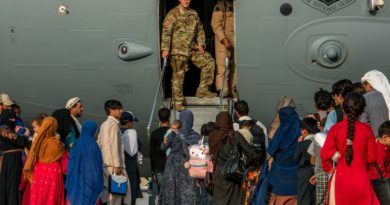A neighbor threatened with stability asks for help… Exercise
(B2) A neighboring country threatened by stability, several European countries under the blow of seemingly separate but in reality well-coordinated attacks... This is the scenario of the major crisis management exercise, which the European Union and NATO
Coping with a complex crisis of a hybrid nature
This exercise, known in military terminology as "EU-HEX-ML 18 (PACE)" (1), aims to improve the EU's ability to in the face of a complex crisis of a hybrid nature comprising an internal dimension and an external dimension ". Let us specify right away that this is not a real exercise, with the deployment of men and equipment on the ground, but a staff exercise, intended to test the politico-military reaction circuits , and that it involves civil structures as much (or even more) than military structures proper.
Any resemblance to facts that exist or have existed is purely coincidental.
Neighboring country threatened by stability calls for EU help
The scenario, as in all these types of exercises, is both imaginary but also very close to certain past realities. The country attacked is not " so far from the European Union confides a European source. He faces " to a major security threat "which compromises" its stability and asked for help from the European Union. The Europeans are therefore considering deploying an assistance or stabilization mission under the CSDP [the common security and defense policy].
Different simultaneous events
At the same time, different attacks of a hybrid nature are taking place in several Member States: cyber attacks, health threats, risk of energy supply cuts, dissemination of fake news. Of the " seemingly unconnected events but which intervene almost simultaneously, and all seem to be linked to the European desire to stabilize this country...
Everyone will have recognized it, we think a lot of Russia and Ukraine, the cyberattacks on official sites, the attack on Salisbury or the threats to cut gas pipelines to countries that are customers of Russian gas.
Everyone on the bridge !
This is the first time that the European Union has conducted a crisis management and response exercise of this magnitude. It will involve, in fact, not only military specialists, but all the European services and systems that have to manage crises. No less than 14 Directorates-General (DG) of the European Commission are thus mobilized, as are the European Border Guard Corps (Frontex) in Warsaw and Europol in The Hague, or the European Civil Protection Mechanism. At the diplomatic and politico-military level, the EU crisis cell alias IPCR (2), the ambassadors and military representatives of the 28 Member States (3) are on deck. NB: Two non-EU countries are taking part in the exercise: Norway (third country) and Switzerland (observer).
An exercise coordinated with NATO
This exercise is conducted in parallel with a NATO staff command post exercise. The objective is to test the interactions between the two organizations in terms of situational awareness, cyber-reaction, crisis management or strategic communication in a crisis situation. Such a 'parallel and coordinated' exercise was first conducted in 2017 (4), with NATO leading the exercise and the European Union leading a smaller parallel exercise. This year, it's the opposite, it's " the EU which mobilizes its instruments and NATO which is the guest explains a senior European diplomat, a bit proud.
(Nicolas Gros-Verheyde)
- MLH = Multi Layer Exercise - PACE = Parallel and Coordinated Exercise (NATO-EU)
- The European Union has a crisis reaction mechanism (IPCR ou Integrated political crisis response), a sort of European counterpart to the 'crisis cells' of the national ministries of foreign affairs. It makes it possible to coordinate a response at the political level between the 28, such as consular protection, concerted evacuation of citizens, etc.
- Meeting respectively within the Political and Security Committee (PSC) and the EU Military Committee (EUMC).
- The EU and NATO had decided to intensify their cooperation in both areas - hybrid and exercises, in the EU-NATO joint statements in July 2016 and July 2018.
Updated on 21.11 - Clarifications provided on the IPCR device

